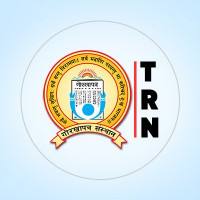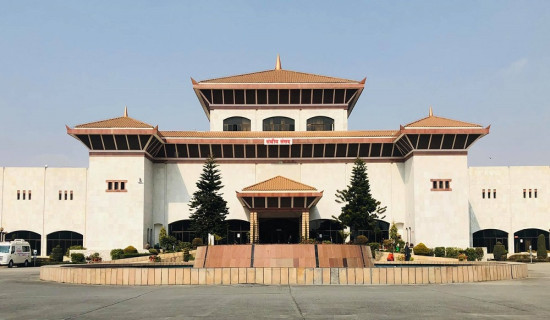- Monday, 19 May 2025
Teej Fosters Affinity
Dixya Poudel
This year the main day of Teej fell on Bhadra 14th but celebrations have been sounding out since Shrawan. And people have been putting up with Teej songs blaring loudly in public transportations and in social media posts for quite some time now. Teej songs are known for their lyrics that sometimes border on frivolity but such is their prevalence that there is no eluding them. As such, Teej is a festival exclusive to the fairer gender during which girls and women fast to please Lord Shiva.
Unmarried girls fast in hopes of suitable husband while married women fast for the longevity and well-being of their husband. The three-day Teej festival starts off with dar during which girls and women enjoy delicious meals and cuisines. The second day is the day of fasting while the third day is Rishi Panchami. Girls and women start preparing for the festival long before it arrives which is observed with utmost faith and reverence. They visit temples to offer their worships and prayers.
In a way it upholds the centuries-long traditions in Nepal as the unique kinship ties between aunts, mothers, grandmothers and daughters are bound together with such festivities. And Teej is a festival that evokes female bonds as women revel in the company of their gender. However, if one is to look from a feministic perspective, it seems Teej is inclined to support patriarchal ideologies. Each year, during this festival there are arguments on its pros and cons. It has been argued that Teej is a festival created by the patriarchal society that keeps women tied to its rules.
Feminists have been sounding the alarm over some of the outdated traditions in Hindu religion. There are thus both sides to this festival and modern women tend to follow Teej but with fewer restrictions and stringent. As is the norm, a society is liable to change and Nepali society too is seeing changes with the advent of technology and globalisation. On Teej, temples are thronged by girls and women dressed to their best in red attires to worship Lord Shiva as Goddess Parvati did. According to religious scriptures, Goddess Parvati prayed, worshipped and fasted to receive Lord Shiva as her husband.
Today the influence of age-old traditions hasn’t diminished in its scope, only made a few modifications. Most young women today don’t fast as strictly, even though there are still those who don’t even drink water. Further, the days leading up to the fasting are observed by lavish parties, expensive traditional dresses and singing and dancing. Meanwhile the men are on the sidelines in celebrations even though they are the main beneficiary that is if the deities are appeased!
But Teej is said to be much more than religious rites. It is also a symbol of women’s unity in a nation. Each year, girls and women of the family and relations gather around, celebrate and make merry during this time of the year. It certainly endorses feminine ties and a feeling of being a woman as well as the sanctity of marriage. As such, today both the traditional and the modern combine when it comes to Teej celebrations. It could be further better to curb lavish celebrations and foster the positive and culturally essential sides to this festival.
















